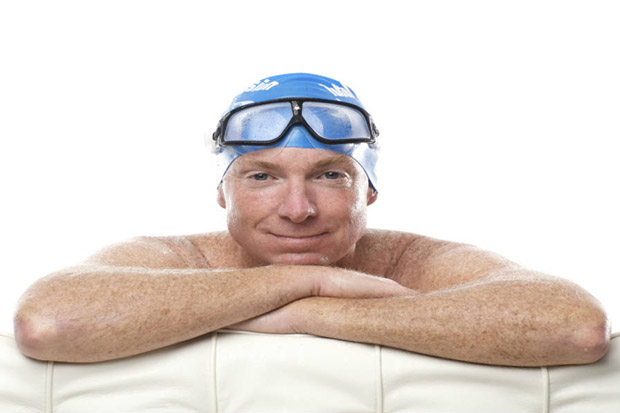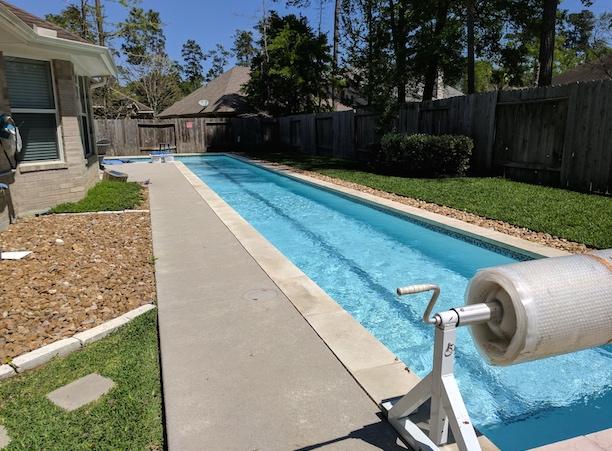Total Immersion founder Terry Laughlin dies at 66

Terry Laughlin, the innovative swim technique pioneer whose Total Immersion system taught swimmers of all abilities and ages to swim in a slipperier, more fishlike manner, died Friday of complications related to his two-year fight with metastatic prostate cancer.
In a release on behalf from Laughlin’s wife Alice and daughters Fiona, Carrie and Betsy, the family wrote: “After living with metastatic prostate cancer for two years (about which he blogged widely), Terry passed away on Friday, October 20th, 2017, of complications related to his condition.
“He displayed his characteristic optimism, wit, and passion for life—and swimming—until the very end. Our family is in mourning and we ask that we be given time and space to grieve a beloved husband and father privately.”
The family noted that a formal obituary will be made available and plans for a public memorial and several memorial swim events will be announced for 2018. The family also announced that in lieu of flowers, “we will be accepting donations for the Total Immersion Swimming Foundation, a philanthropic arm of the company.”
Laughlin's methods were for some controversial, but he taught and defended his theses with grace. Long-time friend Karlyn Pipes wrote on Facebook: “It is with great sadness that I share the news of the passing of Total Immersion founder Terry Laughlin after a battle with cancer. While I may not agree with the techniques he taught, he was a brilliant businessman, innovator and over the years has helped THOUSANDS of people learn to how to swim. For that, I will always be grateful. A hui ho Terry!”
While the thousands of copies of his best-selling books and the tens of thousands of persons who learned the Total Immersion method may have led to the conclusion that Laughlin had been motivated in part by money, his daughter Fiona McHugh Laughlin strongly differs. “I take issue with Karlyn Pipes referring to my Dad Terry first and foremost as a ‘brilliant businessman.’ Here's a little known fact: Terry's business model is one in which his coaches keep 100% of the profits and only pay TI company a very small annual licensing fee. This is not something a ‘brilliant businessman’ would do. He was first and foremost a teacher and coach. Business had NOTHING to do with it for him. TI succeeded as a method purely on the basis that it truly helped people, but from a business perspective, it's practically a non-profit.”
In his focus on older, previously untutored swimmers, Laughlin’s methods became a key to unlock the sport of triathlon for many age groupers.

Laughlin pointed out Total Immersion’s particular value to triathletes in an article defending his at times controversial methods of teaching. “We tell triathletes: Our goal is to teach you to swim with more ease, not to teach you to swim faster; more speed should be a byproduct of saved energy, not from trying to go faster. It has become quite clear to us that the largest benefit to a triathletes’ final time comes from finishing the swim with a low heart rate. If you can swim a half-mile in 10 minutes with a 130 heart rate, or in 9 minutes with a heart rate of 160, you’ll make up many minutes in the bike and run by going slower and saving heartbeats.”
In that article defending his methods against Sheila Taormina’s assertion that Total Immersion does not teach propulsion and does not greatly increase speed, Laughlin asserts that IT’s key principle – less drag equals more speed – does provide competitive speed. He cited several examples of Total Immersion’s benefit for top level swimmers:
“From 1996 to '99, I coached the sprint group at USMA West Point, specifically to address criticism in the competitive swimming community at that time, that TI worked well only for low-skilled swimmers and those who didn’t need to swim fast. In three years of Division I NCAA competition teaching the cadets during the week exactly what I taught to triathletes on weekends the sprinters rewrote the Army and Patriot League record book in short events and all swam far faster than they ever had before.
“In the early 2000s, four-time Olympian Roland Schoeman of the University of Arizona won the NCAA championship and broke the U.S. Open record for the shortest, fastest event, the 50-yard freestyle, swimming it in 19.06 seconds. Roland has embraced the TI approach for six years, since he was a high school swimmer in South Africa.
“In 2002, Adrienne Binder, a 16-year-old swimmer at Santa Barbara Swim Club, swam 1,650 yards in 15:48, the second-fastest time ever for a swimmer her age. Last month she won the 400 IM at the U.S. Swimming National Championships. Her coach calls her the best distance swimmer on the least yardage in history. Adrienne has practiced TI techniques since the age of 10.”
From the beginning
A little bit like Michael Jordan failing to make his junior high school basketball team, Terry Laughlin tried out for the swim team at his Catholic grammar school and did not make the cut.
Laughlin then spent two summers pursuing a Red Cross 50-Mile Swim badge, then joined his high school swim team. He worked hard but his times remained too slow to qualify for the New York City Catholic School championship. He did swim in the Novice Championship where he won his first swimming medal – a valued keepsake all his life.
He finished his college swim career at St. John’s University in 1972, frustrated that his swim times remained so slow. He concluded that no matter how hard he worked, his lack of innate talent would limit how far he could go as a swimmer.
Six months after forsaking competitive swimming, Laughlin began coaching at the Merchant Marine Academy in Kings Point, Long Island, where he realized that technique was the key to swimming success. While he had no training in stroke mechanics, he decided to dedicate his life to teaching swimming as well as coaching.
In February 1973, Terry’s swimmers at the Merchant Marine Academy won 9 of 16 events at the at the Metropolitan Collegiate Championships, breaking several Metropolitan records. While just 21 years of age, the youngest coach in the NCAA, Laughlin was named Coach of the Year.
From 1973 to 1988, Laughlin coached three college and two USA Swimming club teams. In that time he developed 24 national champions at all strokes and distances – the first national champions at four different teams – and his swimmers also earned world rankings.
In 1989, Laughlin founded Total Immersion and shifted his focus from young swimmers to adults with little experience and skill. Terry and a small group of instructors taught a fishlike style of swimming emphasized slippery bodylines rather than muscling the water with arms and legs. In 1996, Laughlin organized his philosophy and innovative techniques into a system he outlined in the book Total Immersion: The Revolutionary Way to Swim Better, Faster and Easier. Shortly thereafter, it became a top selling book on swimming and continues to lead all other books on swimming technique two decades later.
U.S. Olympic swim coach Eddie Reese of the University of Texas praised the book: “The most valuable service a good coach provides is to sharpen your technique, not make you work harder. Terry Laughlin has done an outstanding job of simplifying that complex job, providing practical tools that will work for any coach or teacher.”
U.S. Olympic swim coach David Marsh of Auburn University said: “Total Immersion can help anyone learn to be a better swimmer, regardless of ability. Terry Laughlin makes an improved stroke simple for the novice, yet I've seen his methods work for elite swimmers, too.”
While his days of high school and collegiate swim meets were behind him, Laughlin found greater satisfaction and accomplishments later in life at open water and adventure swimming. In 2006, he completed the 28.5-mile Manhattan Island Marathon Swim for the second time, won the National Masters Open Water Championships at four distances and broke national records in the 1-mile and 2-mile cable swims.

In his blogs, Laughlin recounted his most memorable swimming experiences. “They happened in swimming treks – swims that belong on any swimmer’s bucket list. During these I explore a part of Planet Water to which access is granted to only a few. Think of these as a swimmer’s Mount Everest – one that puts you in far more exclusive company , at the fraction of expense, and no risk of falling into a crevasse or being caught in an avalanche. Such an experience is made far richer when shared with friends in a beautiful natural setting.”
In 2013, Laughlin and a Swedish executive and a cardiothoracic surgeon of Finnish heritage swam the 18-kilometer Gibraltar Strait from Spain to Morocco. The next week, Laughlin, his two Gibraltar companions and Nick Adams swam the 12 kilometers from Corsica to Sardinia.


